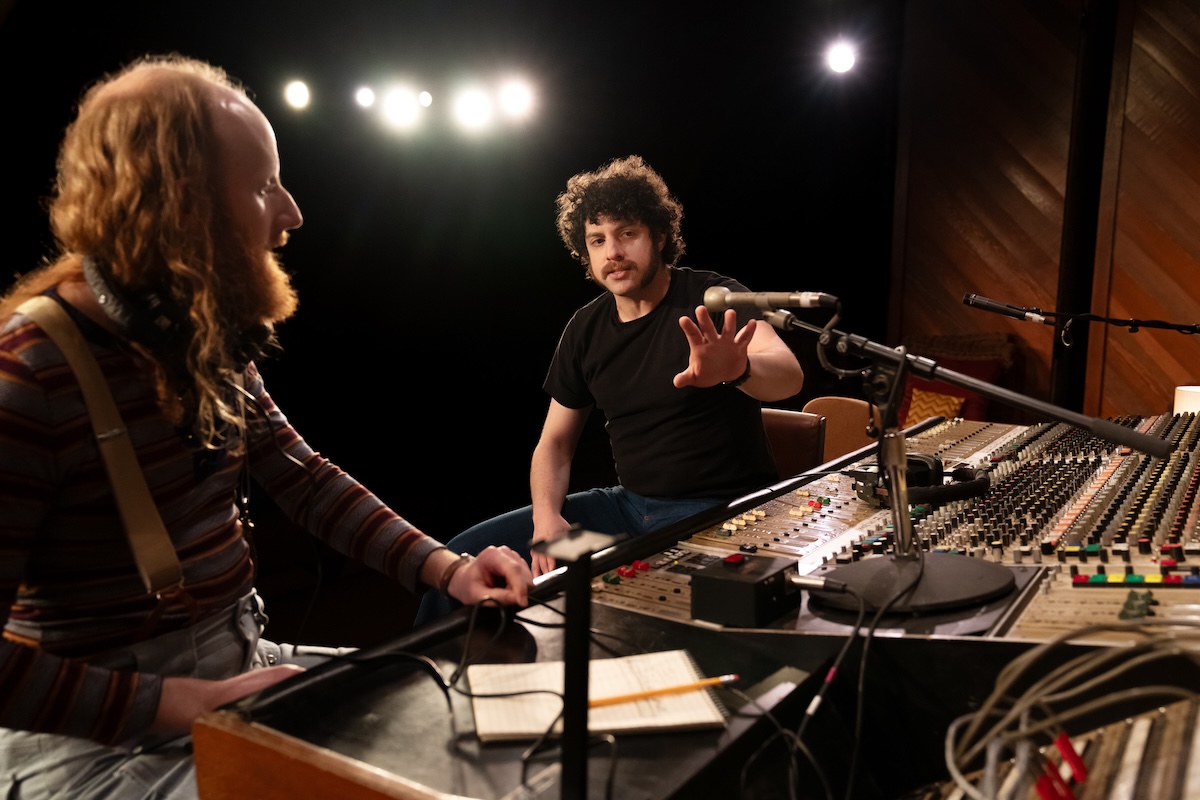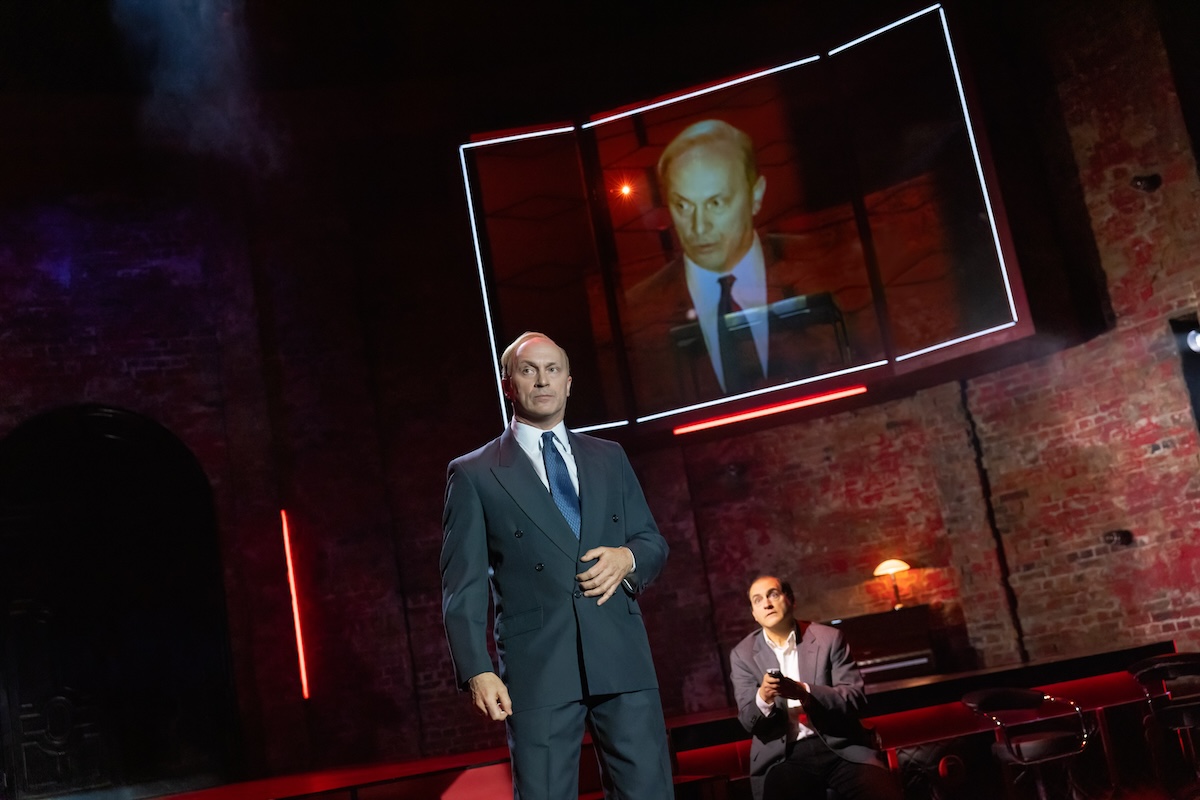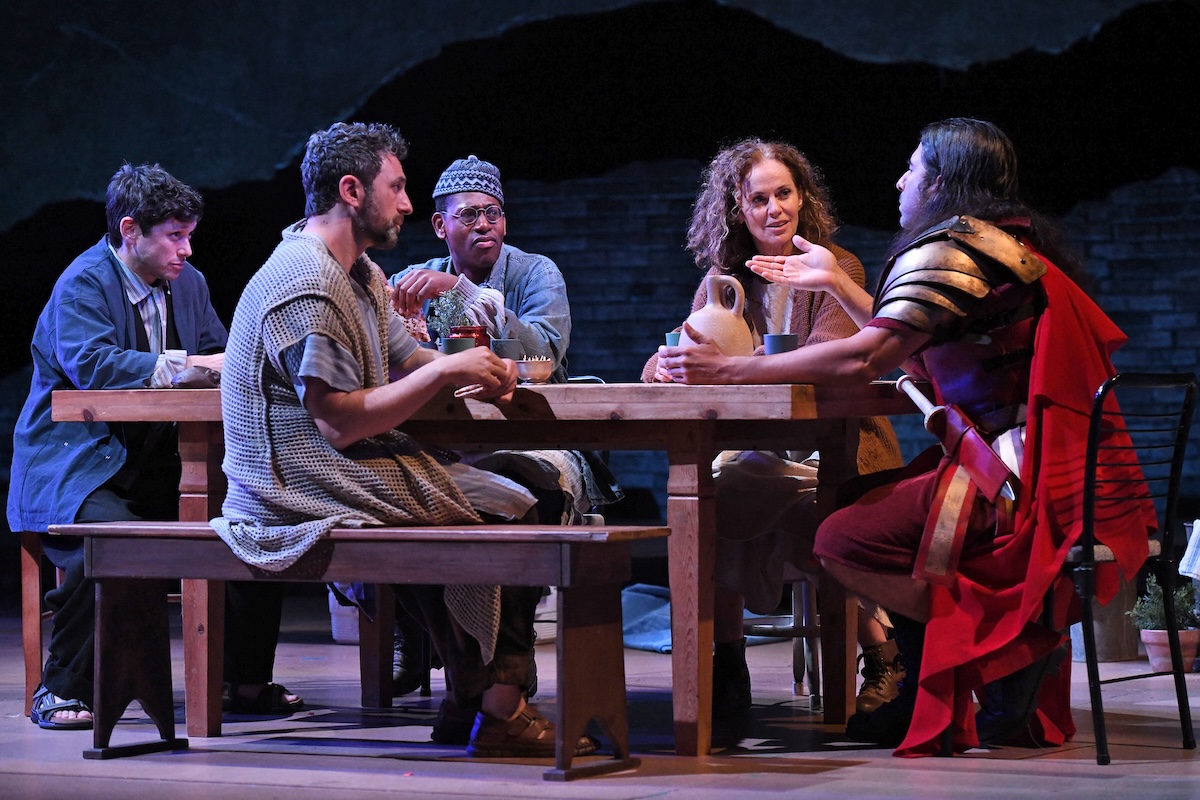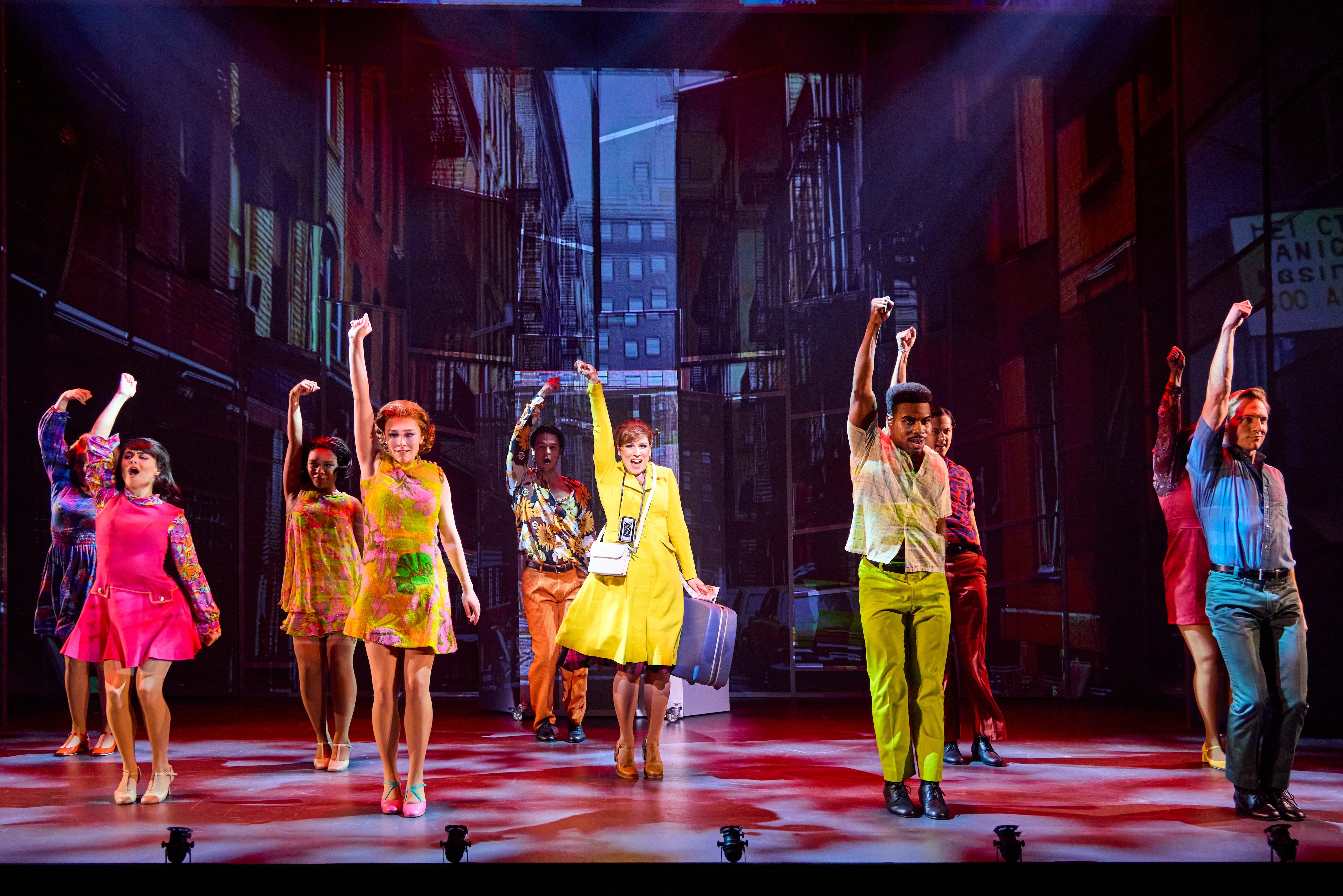Office Life Takes a Dark Turn in Gloria
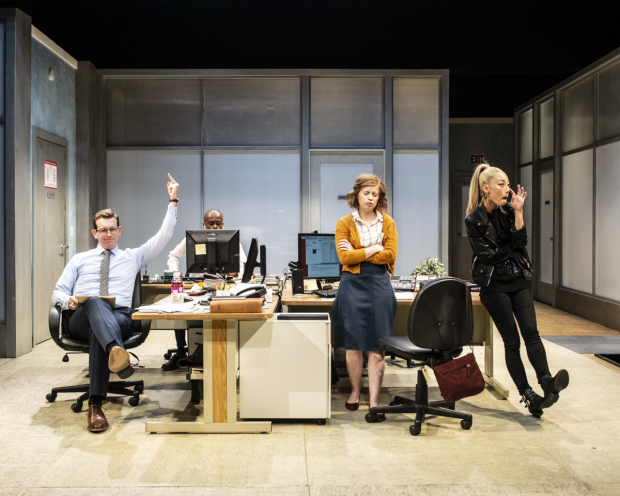
(© Teresa Castracane)
In 2015, Branden Jacobs-Jenkins's Gloria appeared, a satiric dark comedy that details the cut-throat nature of a prestigious New York literary magazine. At the end of Act 1, Gloria incorporates a violent event into the action to expose modern media's insatiable hunger for properties and profits. Now Woolly Mammoth is offering a precise, incisive Washington, DC, premiere.
Gloria's first act is set in the midtown offices of the aforementioned magazine, where four desks sit jammed together, their occupants unhappily facing one another. The desks are occupied by a group of editorial assistants including Ani (Megan Graves), a quiet, long-term editorial assistant who claims she has no ambition; Miles (Justin Weaks), a Harvard intern who has no idea what he will do when he graduates; Dean (Conrad Schott), who strolls in late and hung over because he stayed until the end of a housewarming party the night prior; and shopaholic Kendra (Eunice Hong), who arrives last, carrying shopping bags, eager to show off her latest purchases. Gloria (Alyssa Wilmoth Keegan), a copy editor who has been at the magazine for decades, wanders into the office several times, distant, speaking to no one. A fact-checker, Lorin (Ahmad Kamal), enters repeatedly to beg for quiet. Kamal's impressive meltdown at the end of the first act reveals that he believes he has lived in vain.
Jacob-Jenkins perfectly captures the rhythm of a modern office, where monotony and boredom are rules of thumb. More importantly, he shows how valuable an incident becomes when observed by a group of would-be writers. After a horrific, life-changing event occurs at the end of Act 1, the play's action goes in a different, more diffuse direction. Now Jacobs-Jenkins explores how the observer of the event, and those adjacent to the action, try to turn it into a literary happening with a hefty price tag.
Kip Fagan directs the first act at a sprightly pace, but the second act is of a different order and even Fagan can't give it enough energy to match Act 1. In a scene at a New York Starbucks, the editorial assistants' boss, Nan (Keegan), who was heard but not seen in Act 1, first gossips with a friend about the horror she only heard but never saw, then goes to Los Angeles to make her vision of that horror into a film. It is a searing, damning take on how Hollywood values the packaging and marketing of a fact more than that fact itself.
The curious thing about this setting is that the magazine is supposed to be a beacon of enlightenment and ideas, but none of these workers express the slightest intellectual curiosity about anything. Graves plays Ani as a young woman who knows how Manhattan eats its young. She at least is grateful for her job. Hong's Kendra, on the other hand, is continually sniping at everyone, her venomous words spitting out with the speed and poison of a viper's tongue. Schott plays Dean as a smooth talker who has an easy confidence in his future as a writer. Dean and Kendra get on like feral cats vying for the same food. Weaks's Miles is likable, though confused.
Set designer Misha Kachman creates their world of cubicles and offices by using frosted, sliding glass walls supplemented with office equipment. Lighting designer Colin Bills suggests changing moods by adding a rotation of colors to the glass. Costume designer Kelsey Hunt grounds the office workers in clothes that evoke the styles of 2010, when the first act of the play is set. Kendra's all-black outfit is particularly suitable to the style-obsessed New Yorker.
Jacobs-Jenkins's nuanced use of violence in Gloria illustrates how greedy people can seize on disasters in order to profit from other people's losses. But in the beautifully written turnaround at the end of the play, he also shows us how occasionally tragedies can change some lives for the better.



